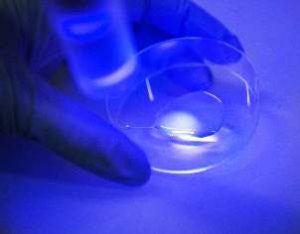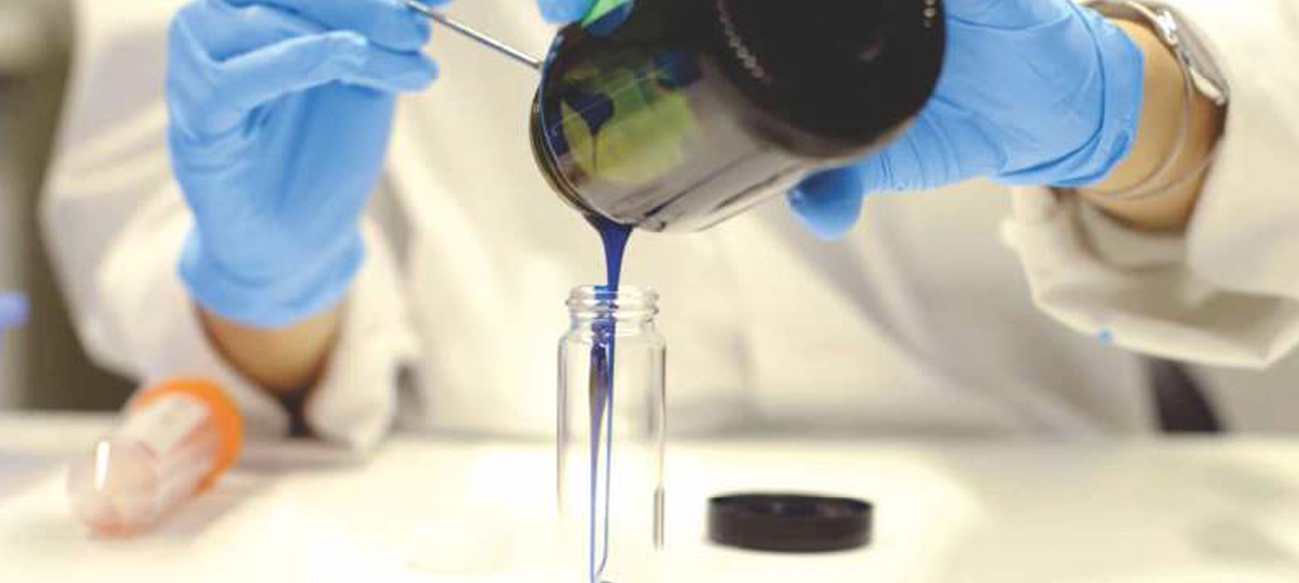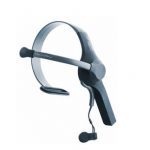The allusion to tissue reconstruction is a reference to the fact that each of the applications for its polymers, including SETALUM Sealant, is intended to support the body’s natural healing process to promote recovery
Adhesives and sealants have existed since time immemorial. Some of the earliest sealants were extracted from sources or processed from products like latex and animal proteins. However, technological development in the modern world has brought about new ways of formulating these adhesives and sealants. The chemical and synthetic manufacturing of these products with process equipment has allowed the necessary development as demand in the market has increased. Sealants and adhesives have now been significantly adopted by the medical industry for use in the surgical department to close wounds.
Utilization of adhesives and sealants in the medical industry has had a notable impact in the capability for wound management and surgical purposes is progressively being unveiled as these two industries continue to develop.
As of 2017, in the adhesives & sealants market, adhesives segment was valued at $46,104.45 million and sealants at $9,530.5 million, which are expected to register CAGR of 5.10 per cent and 6.1 per cent respectively, during the forecast period (2018-2023). Asia-Pacific is likely to lead the market, due to the rapid economic growth, according to Mordor Intelligence.
Moreover, ‘The Adhesives and Sealants Market’ share is expected to garner $66,876 million by 2022, registering a CAGR of 3.7 per cent during the forecast period 2016‐2022, according to allied market research.
Sealants can either be fibrin-based, thrombin-based, collagen-based, or gelatin-based. The most commonly used sealant in the medical industry is the fibrin. In the United States, doctors for orthopaedic surgeries have primarily adopted it. Its penetration rate is quite efficient, and it is believed to be between 25-30 per cent. However, fibrin sealants are not as effective under wet surgical conditions because an estimated range of between 10 per cent to 15 per cent significantly reduces its penetration rate. The demand of sealants has tremendously increased in the modern medical market. This has been instigated by the fact that most sealants improve biocompatibility and have a powerful sealing ability. Thus, they meet the needs of most users including doctors.
 MediWorldME spoke with Gecko Medical’s CEO Christophe Bancel to discuss how is their SETALUM™ Sealant, a biocompatible, bioresorbable and on-demand activated sealant usable in wet and dynamic environments as an add- on to sutures during vascular surgery.
MediWorldME spoke with Gecko Medical’s CEO Christophe Bancel to discuss how is their SETALUM™ Sealant, a biocompatible, bioresorbable and on-demand activated sealant usable in wet and dynamic environments as an add- on to sutures during vascular surgery.
SETALUM™ Sealant
The SETALUM™ Sealant is a biocompatible, bioresorbable and on-demand activated sealant usable in wet and dynamic environments as an add-on to sutures during vascular surgery. The polymer is applied to tissue in-situ and activated using a proprietary light activation pens. The entire process is completed in vivo, and enables the in situ printing of an instant hermetic barrier and effective homeostasis.
“Our SETALUM ™ Sealant is a biocompatible, bioresorbable, and on-demand activated sealant designed to be used in wet and dynamic environments. The use case we devised for the sealant is as a complement to surgical sutures during vascular surgery. A surgeon can apply the sealant to the vascular tissue and then use a specialized, proprietary light pen to activate the SETALUM Sealant key properties,” explained Bancel.
The grant of the CE Mark for the vascular sealant is the first regulatory validation of the safety & performance of Gecko Biomedical’s scalable & innovative polymer platform.
“In vascular surgery, there are a number of factors that combine to create a difficult environment for traditional adhesives, including constant movement and flowing liquids—you must have a material that is strong while also being flexible. Gecko Biomedical’s SETALUM Sealant is helpful with these procedures because it meets all of these requirements, in addition to the fact that it is biocompatible and can be absorbed by the body. A surgeon can apply this quickly and simply as a viscous liquid with an application device that is proprietary to Gecko Biomedical and then change it into its solid, flexible state with light activation, also proprietar y to our company.”
“Our SETALUMTM Sealant is a biocompatible, bioresorbable, and on-demand activated sealant designed to be used in wet and dynamic environments. The use case we devised for the sealant is as a complement to surgical sutures during vascular surgery. A surgeon can apply the sealant to the vascular tissue and then use a specialized, proprietary light pen to activate the SETALUM Sealant key properties.” – CEO Gecko Medical, Christophe Bancel
Bio-inspired technology
Bio-inspired technology refers to any technology that is inspired by nature. Some of the core features of Gecko Biomedical’s polymer-viscosity, hydrophobicity, change of state (viscous liquid to flexible solid) is controlled by a stimulus.
“As you can imagine, one of the challenges of vascular surgery is that the blood is flowing, and bleeding must be controlled in order to complete the procedure. The SETALUM Sealant can meet this requirement for these surgical procedures, we have shown that it works for this specific use case with a clinical trial. In 2016, we conducted a trial to look at the safety of the sealant, as well as the performance, which we tested by looking at the percentage of immediate homeostasis once a clamp placed during surgery was removed. The subjects in the trial were all patients needing a carotid endarterectomy. Of 22 patients enrolled, immediate homeostasis was achieved in 85 per cent of patients.”
Key features of SETALUM Sealant include its biocompatibility and the fact that it is bio-resorbable, as well as the viscosity of the polymer and its hydrophobicity. The Gecko Biomedical polymer is also only activated by light, and it’s a very specific light, which means that a surgeon can place the SETALUM Sealant without being concerned it will start to solidify until he or she is ready. Once the light hits the sealant it transforms into it’s solid, flexible state, and this is a crucial feature because the surgeon controls it and polymerization takes place on demand.
Bancel added, “The technology was developed at MIT by Robert Langer and Jeffrey Karp, both co-founders of Gecko Biomedical, and Maria Pereira, our Chief Innovation Officer, to provide a solution to a problem faced by surgeons every day, which is how to help patients heal more quickly. The solution from the team at MIT was to develop a technology that could be used in multiple ways to close internal wounds and support tissue reconstruction, that’s how the foundational polymer was born. The SETALUM Sealant is just the first of many use cases for the polymer that they developed.”
The SETALUM sealant is just a single use case for the polymer it is made of. Depending on how it’s formulated the polymer or functionalize it, it can also be used as an adhesive, a filler, a tissue guide, or even as a means to provide controlled release of drugs into the body. It can be used on more than just vascular tissue, and each of these uses requires its own delivery device and a specific activation light, which is determined by the use case.
Healthcare innovation
“As you may imagine, healing is a number one concern after treatment, and our SETALUM Sealant offers surgeons a less invasive way to seal surgical wounds, which improves patient care by promoting faster healing. I believe we will continue to see new developments in the sealant space, but in most cases, these developments are chemical adjustments of old formulas. They don’t address the issues presented by the dynamic environments our product is made for. Specifically, as I mentioned our sealant will be applicable in wet environments, and flexible enough to be used on moving parts without losing the seal,” Bancel remarked.
“Furthermore, the SETALUM sealant is just a single use case for the polymer it is made of. Depending on how it’s formulated the polymer or functionalize it, it can also be used as an adhesive, a filler, a tissue guide, or even as a means to provide controlled release of drugs into the body. Additionally, depending on its formulation, it can be used on more than just vascular tissue, and each of these uses requires its own delivery device & a specific activation light, which is determined by the use case.
“Absolutely—our initial plan for the technology is that it will be used as an add-on for vascular surgery, but we already have many more ideas for other clinical indications and ways that the technology could be useful for surgeons and others. There is definitely more to come here,” he continued.
The allusion to tissue reconstruction is a reference to the fact that each of the applications for its polymers, including with their first product, the SETALUM Sealant, are intended to support the body’s natural healing process, such as by holding something in place, as with the sealant, to promote recovery.
 “The SETALUM Sealant is not yet on the market – we received CE Mark approval for the sealant last year, that will allow us to market the technology in Europe. Now, we’re constructing a manufacturing facility in Roncq, in the Hauts-de-France Region, that will use only green electricity, and it will feature four clean rooms and an analytical laboratory. We plan to produce all of our liquid polymers in individual syringes and in sterile conditions, ready-to-use, so completion of the manufacturing site is a key step to putting this on the market,” the CEO highlighted.
“The SETALUM Sealant is not yet on the market – we received CE Mark approval for the sealant last year, that will allow us to market the technology in Europe. Now, we’re constructing a manufacturing facility in Roncq, in the Hauts-de-France Region, that will use only green electricity, and it will feature four clean rooms and an analytical laboratory. We plan to produce all of our liquid polymers in individual syringes and in sterile conditions, ready-to-use, so completion of the manufacturing site is a key step to putting this on the market,” the CEO highlighted.
With the sealant’s ‘BlueSeal’ clinical study denotes that the SETALUM Sealant could achieve immediate homeostasis at a rate of 85 per cent. However, the product has not been studied yet for applications to air leaks following surgeries yet.
Other technological advancements
“We plan to use chemically different versions of our polymer as the base for other products, and we plan to keep innovating in tissue reconstruction. Specifically, we will look to expand functionality of the polymer to look at things like adhesives, fillers, 3D printed devices, etc., but we will also expand to new therapeutic areas, such as cardiac tissue, nerves, bone and tissues related to urology and ophthalmology,” Bancel further explained.
Additionally, the company is working on other advancements that may be less visible to some, such as the manufacturing facility that the company is building, and conversations that with potential partners about future applications for its polymer technology.
“We will be marketing our SETALUM Sealant in a pre-filled syringe, so there is no preparation time, and each version of our polymer will require a specific delivery adapter. Additionally, when a surgeon is ready to set the polymer all that is needed to cure it is a specific light that we have developed, and the polymer can then be set on demand. As far as biocompatibility, the SETALUM Sealant offers long term healing support without the threat of toxicity, and it will be the same with our other products that will eventually be a part of the broader polymer platform.”
Biocompatibility issue
Efficacy is the key criteria when selecting a technology, however, biocompatibility is a key requirement and when it comes to tissue reconstruction, bioresorbable is much better, according to Gecko.
“As technology advances and surgeons have more options presented to them that fit these criteria, we definitely think this will be a more important criteria, but absorbability won’t trump safety, so it will be important that any new technologies can be incredibly safe and as effective as the current standard of care.
“SETALUM is designed to provide immediate hemostasis allowing the surgeon to complete in an effective manner the specific vascular reconstruction procedure he or she has to work on. The goal is to facilitate the surgical procedure itself, but also recovery of the patient,” Bancel concluded.
















